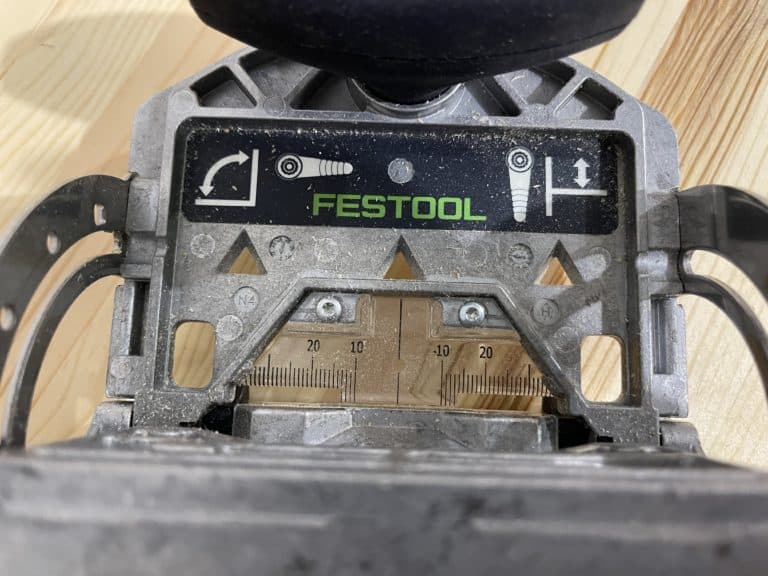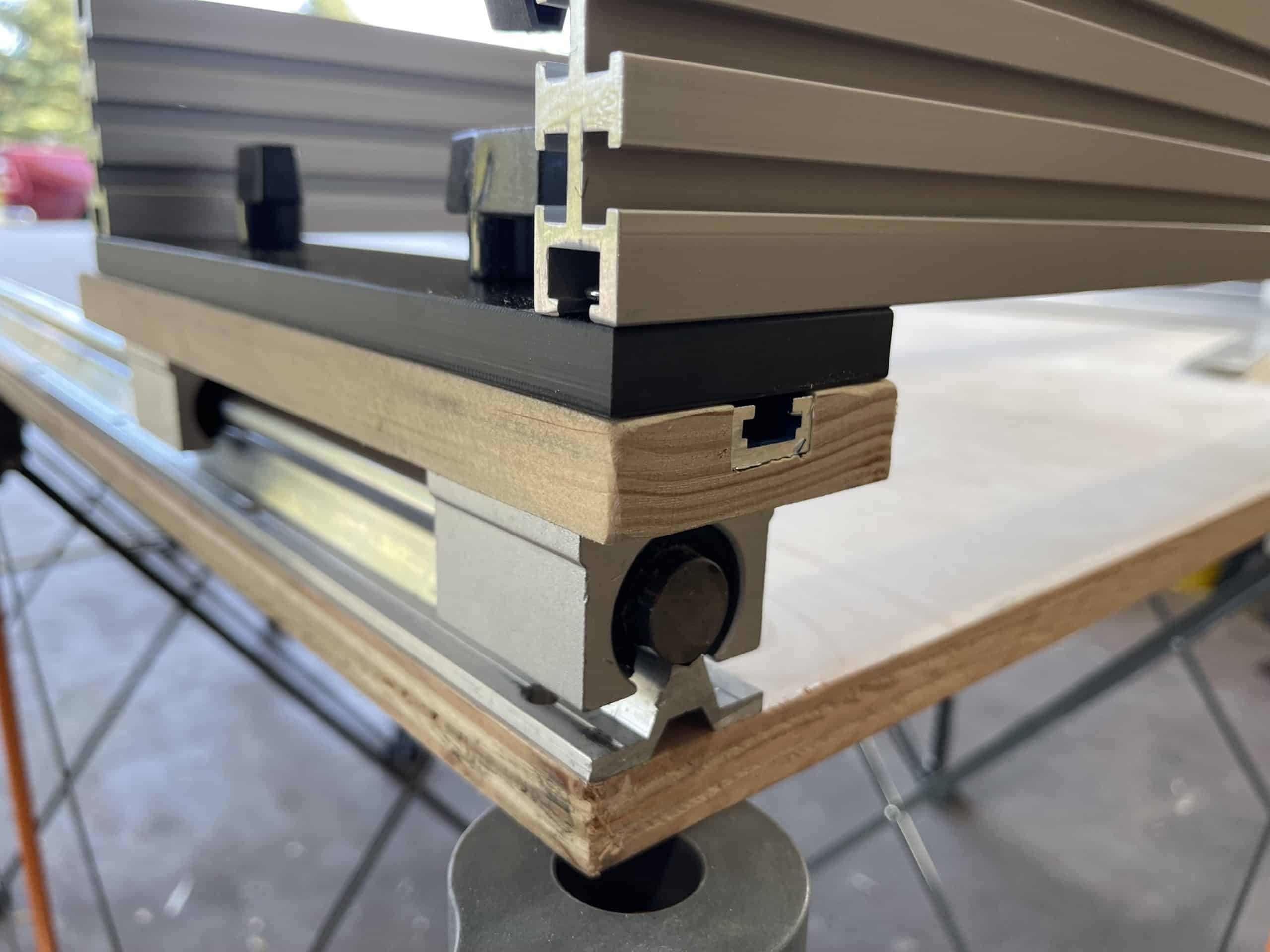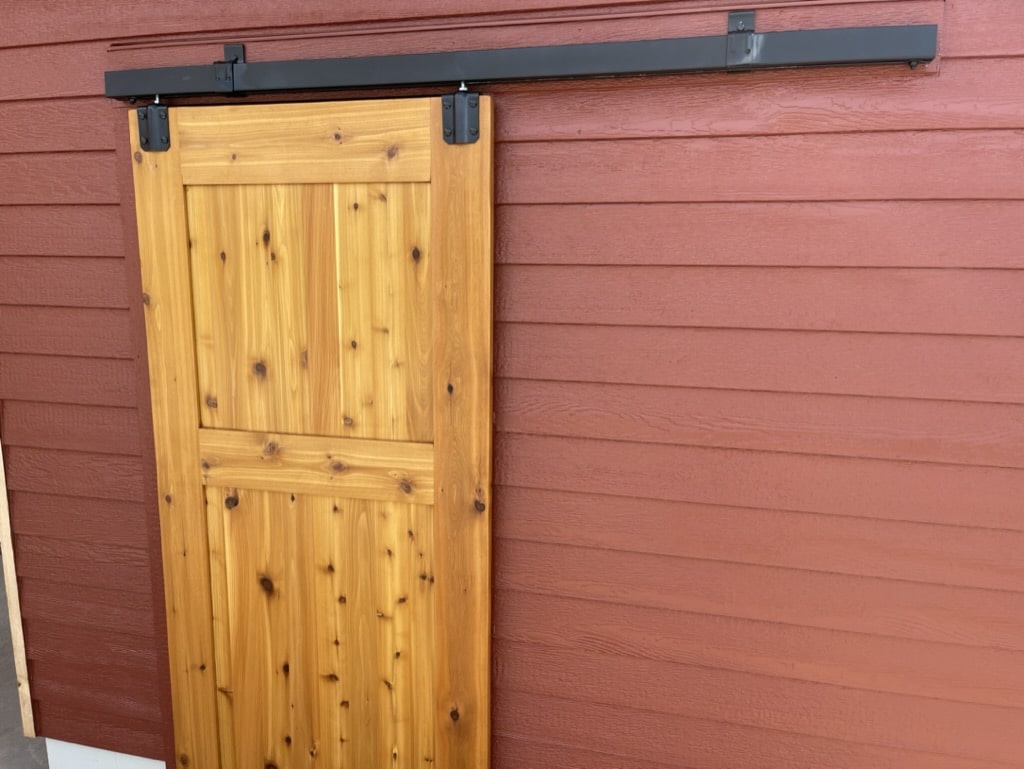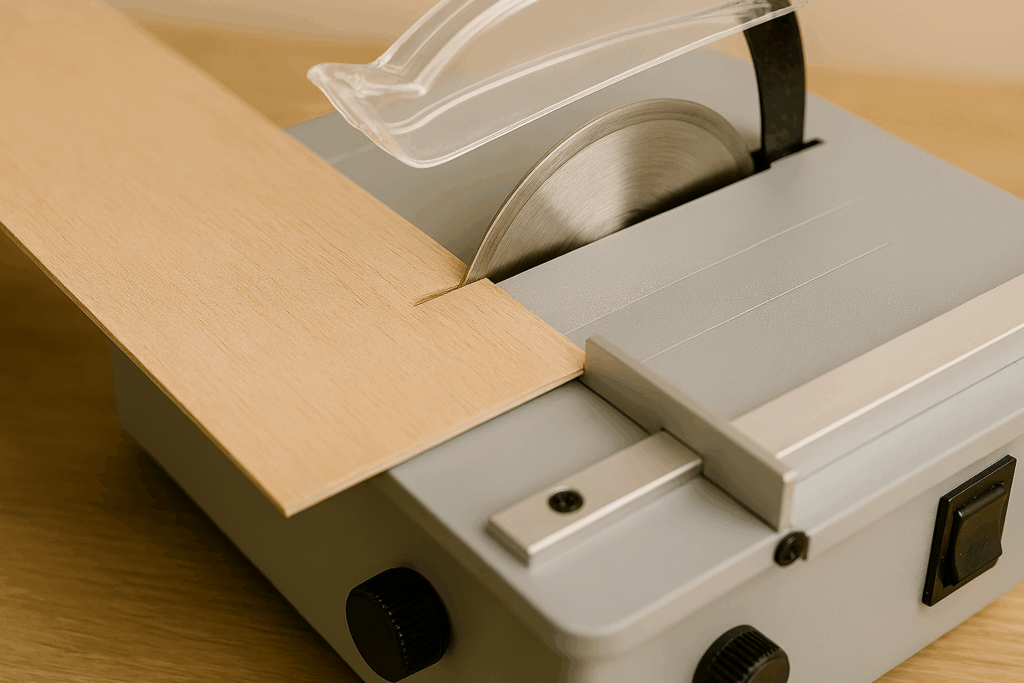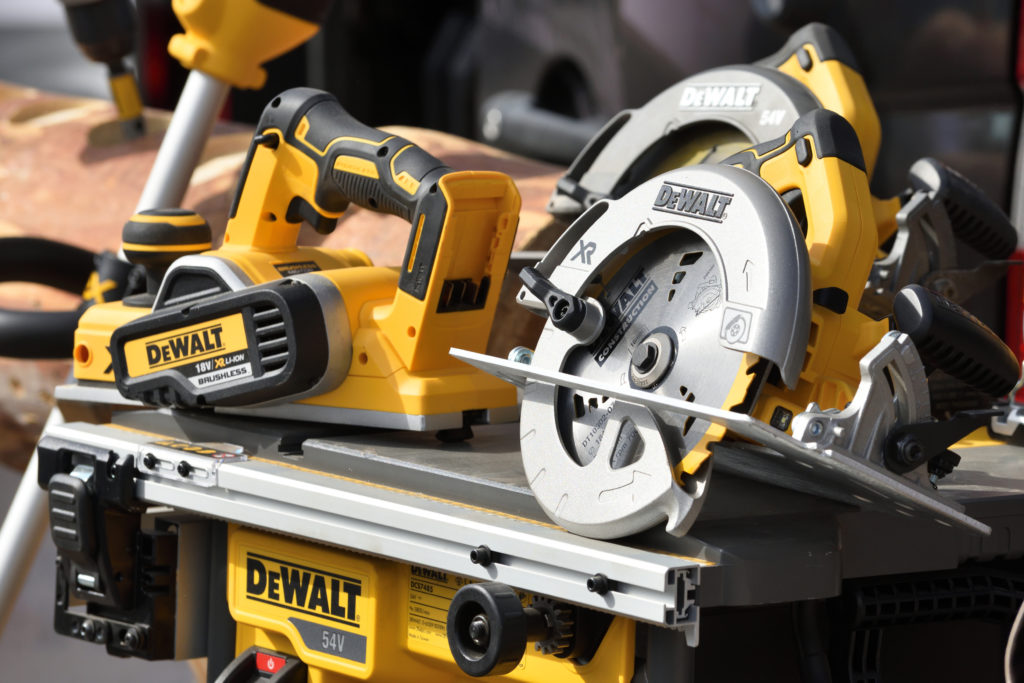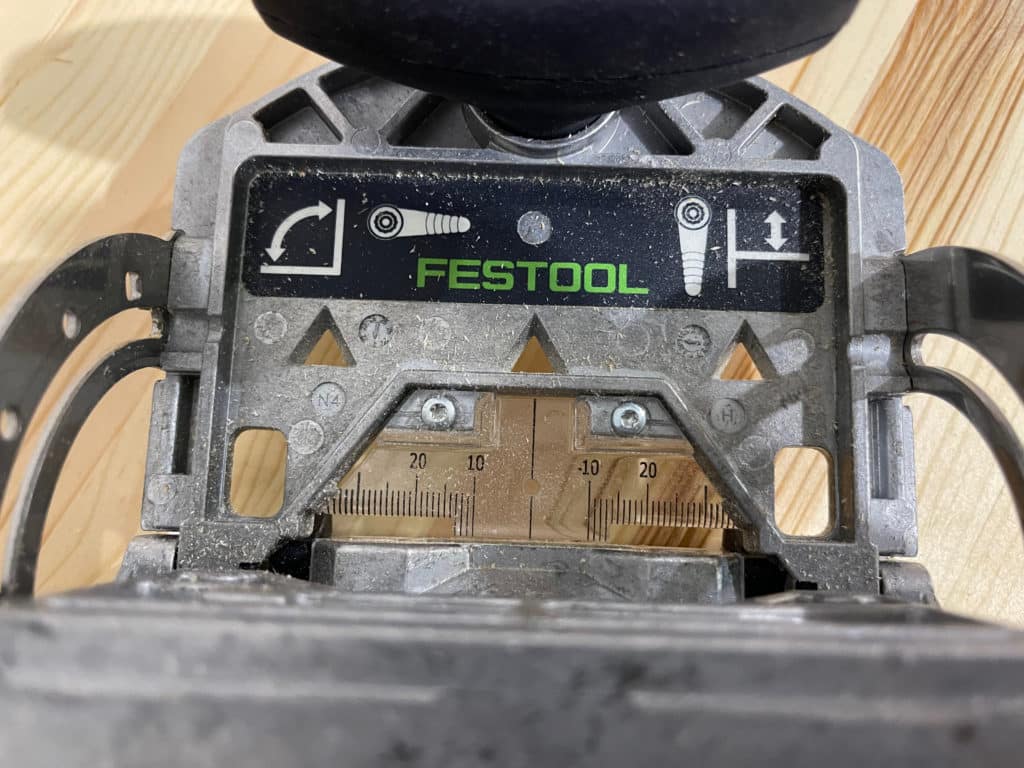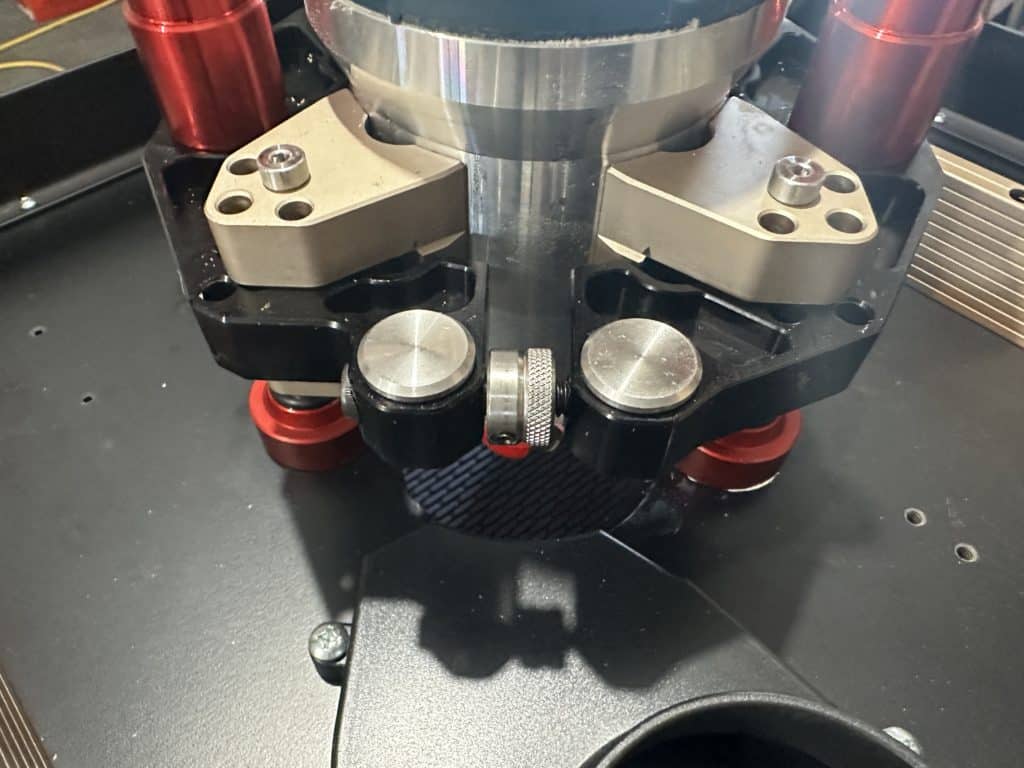Surprisingly, professional woodworking tools aren’t just top-of-the-line miter saws or table saws. Instead, the tools professionals use for woodworking are unique in their capability and are built to improve the speed and quality of the work.
For example, most DIY woodworkers start with pocket hole joinery and possibly dowel jigs or biscuits.
But a professional uses advanced wood joinery tools like a Festool DOMINO to create loose tenon joints.
After almost thirty years of woodworking, my shop has grown from the basics to hand tools that cost more than my first table saw. I’d like you to please learn what tools I now own and wish I had collected years ago.
#1 - Festool DOMINO for Creating Loose Tenons
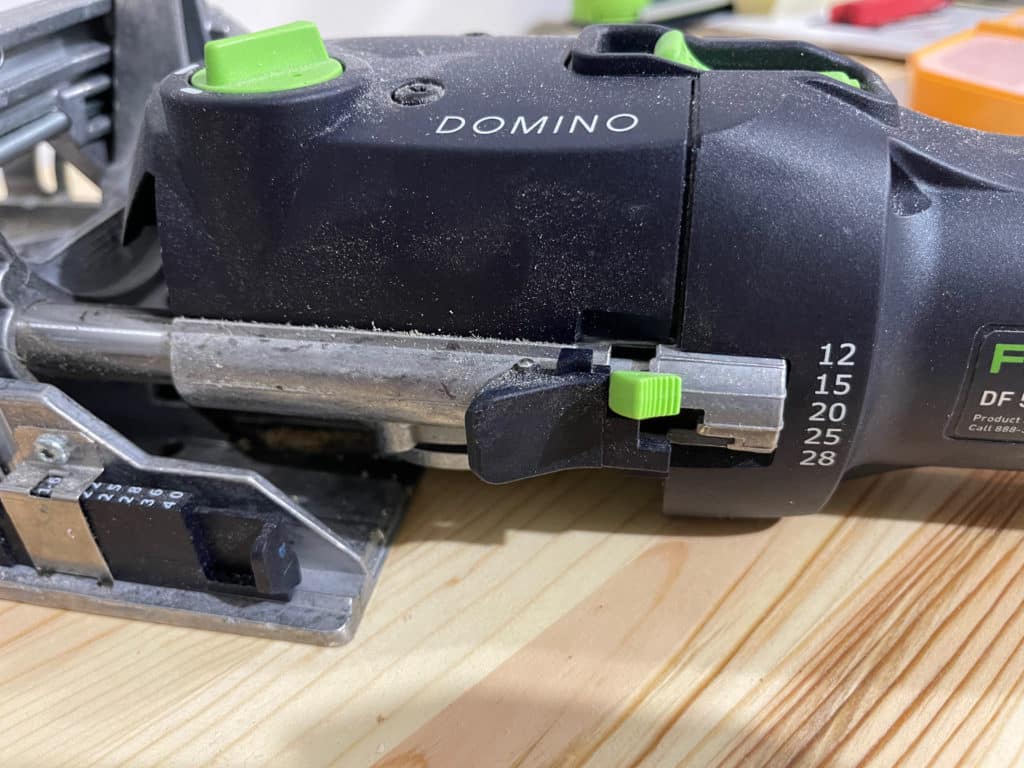
The first thing to know about professional woodworking tools is this: they aren’t big box brands.
Instead, professionals turn to highly specialized woodworking tools that cut more precisely, speed up production, or have unique capabilities.
Why, then, is the Festool DOMINO on this list? Well, woodworking at its very basics is simply joining wood together to create a structure. The DOMINO takes a traditional mortise and tenon joint (used for thousands of years) and creates a near-instant loose tenon joint.
Key advantages:
- Loose tenons that are superior to biscuits, dowels, and pocket hole screws
- Speed of joint creation
- Portable to allow you to take the machine to the wood
Why do professionals use a DOMINO? Aside from the patent Festool holds on this unique tool, its speed and accuracy for furniture and cabinetmaking are un-rivaled.
Read more:
#2 - Professional Grade Festool Kapex Miter Saw
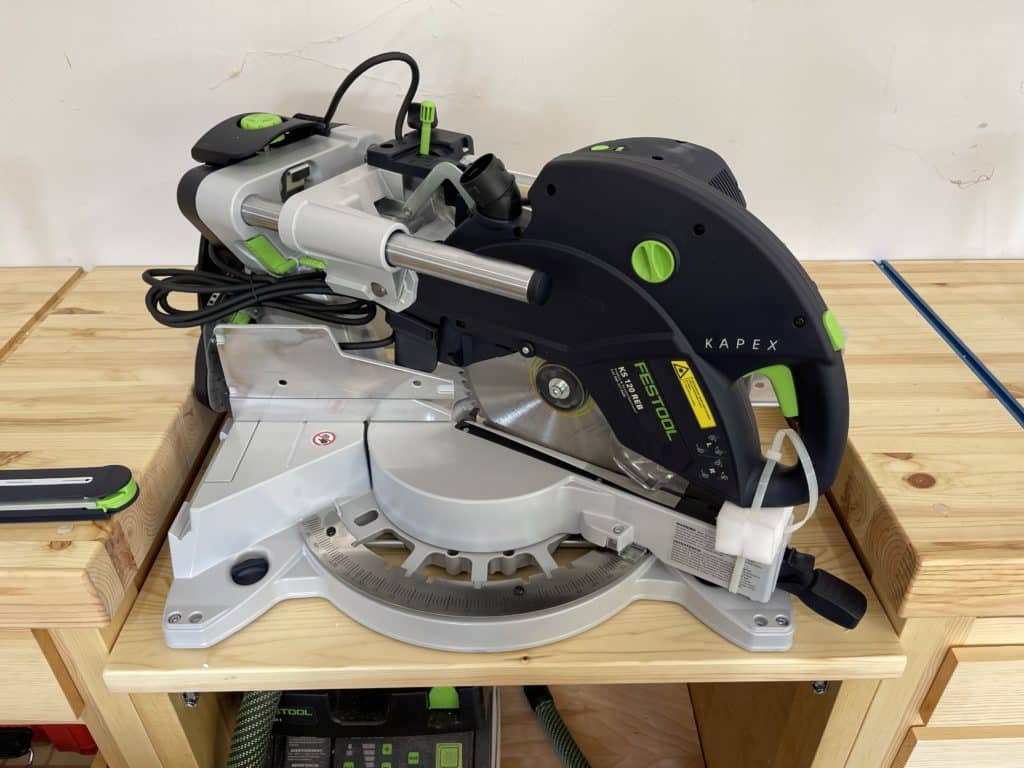
While I’m not showing off my collection of Festool tools, it is worth understanding a professional doesn’t use a $299 miter saw.
Why?
Because of the features and accuracy, a high-end saw offers including:
- Laser guides for perfect cuts
- Advanced dust collection
- Quick hold-downs
- Maximum cut capacity
- Accuracy
- Compact, bench-friendly design
Expensive? Yes. But you’ll crosscut more wood in your shop than you’ll rip. So agreeing to a competitive price point with a table saw isn’t a decision – it’s a must. A top-rated miter saw will be in your shop for decades.
#3 - Power Feeder For SHapers and Router Tables
From making shaker cabinet doors to a simple quarter-round edge, a router table is a staple in every professional shop.
But pushing hundreds or thousands of lineal feet of lumber through a table saw or router table is more than just tiring. It’s error-prone.
This is why a professional woodworker uses a power feeder that reduces fatigue and prevents start/stop marks in the wood.
Key features:
- Three or four speeds to adjust the rate of stock feed into the bit or saw blade
- Downward pressure prevents stock from moving
- Adjustment allows for pressure into the fence
- Soft rollers won’t mar wood
- Available in sizes from “mini” for router tables up to industrial shapers and table saw feeders
- Single or three-phase
Read more: Guide to the Best Woodworking Power Feeders.
#4 - Slab Flattening Mill For Large Surfaces
While a drum sander is also on this list of professional woodworking tools, a slab flattening jig owns a top 10 spot because of its unique ability to flatten wood slabs weighing 500+ pounds.
All without you needing to lift the slab.
Compared to many other tools, these jigs will have few selections. A few of the popular jigs include:
For my shop, I paired the economical Woodhaven sled with linear rails and some ingenuity in a custom slab sled.
Read more: Guide to Slab Flattening Mills.
#5 - Dust Extractor For Small power and Hand Tools
In most workshops, the dust collection starts with significant tools like table saws, planers, and drum sanders.
But even the best professional woodworking tools won’t function if the cutting or sanding surfaces are clogged.
The solution? Dust extractors that use HEPA-grade filtration to capture small particles. Oddly enough, they are MORE damaging to your health as they pass through your body’s defenses more easily.
Do you have anything to look for? Well, I chose the Festool 574837 as it featured:
- 130 CFM of suction
- Long hose
- Extra capacity
- Powers on/off with the tool
- Flip-stop stand to keep it in place
And, of course, the Festool reputation.
Read more: Best Dust Collection Systems for Woodworking.
#6 - Drum Sander For Perfectly Flat Panels
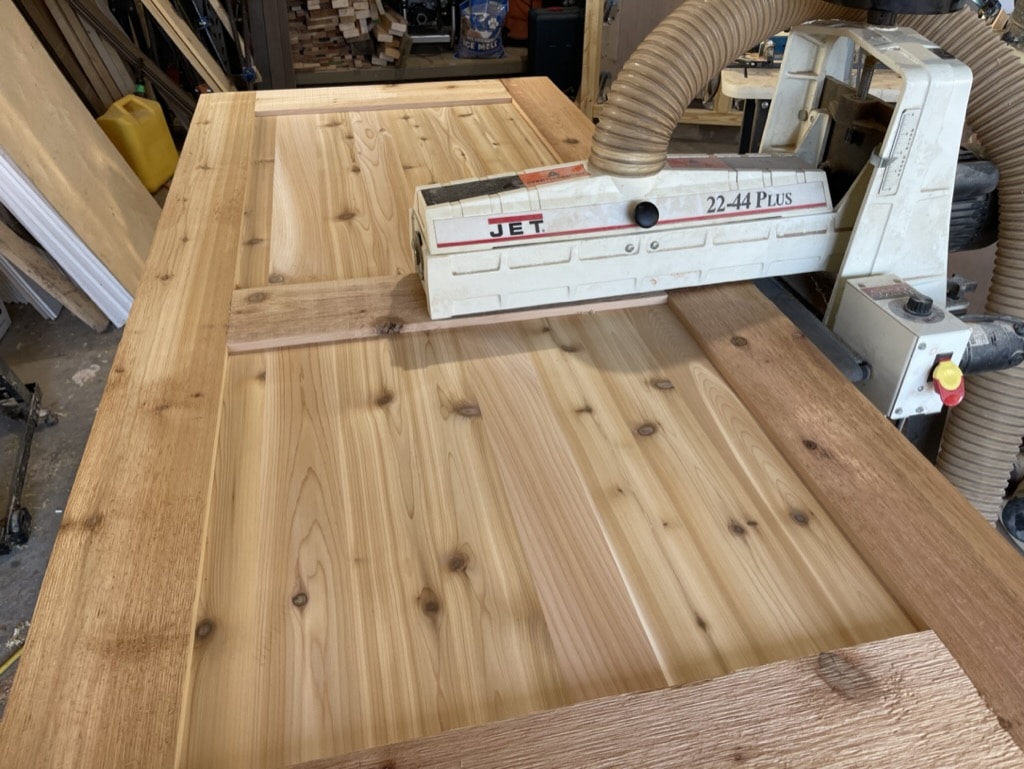
Only a few professional woodworking shops have a large drum sander or belt sander.
Period.
While you can sand a cabinet door, panel, or cutting board flat with a belt sander, it is a slow process that produces a sub-par finish.
With a drum sander, professionals can:
- Sand single pieces of wood up to 50 inches wide
- Use low grit paper to sand rough surfaces
- Use high grit paper to create finish-ready surfaces
- Speed up production by turning a half-day manual job into a few minutes
- Create perfectly flat finished pieces
Read More: Guide to Drum Sanders for Woodworking
#7 - Track Saw for Cutting Panels to Size
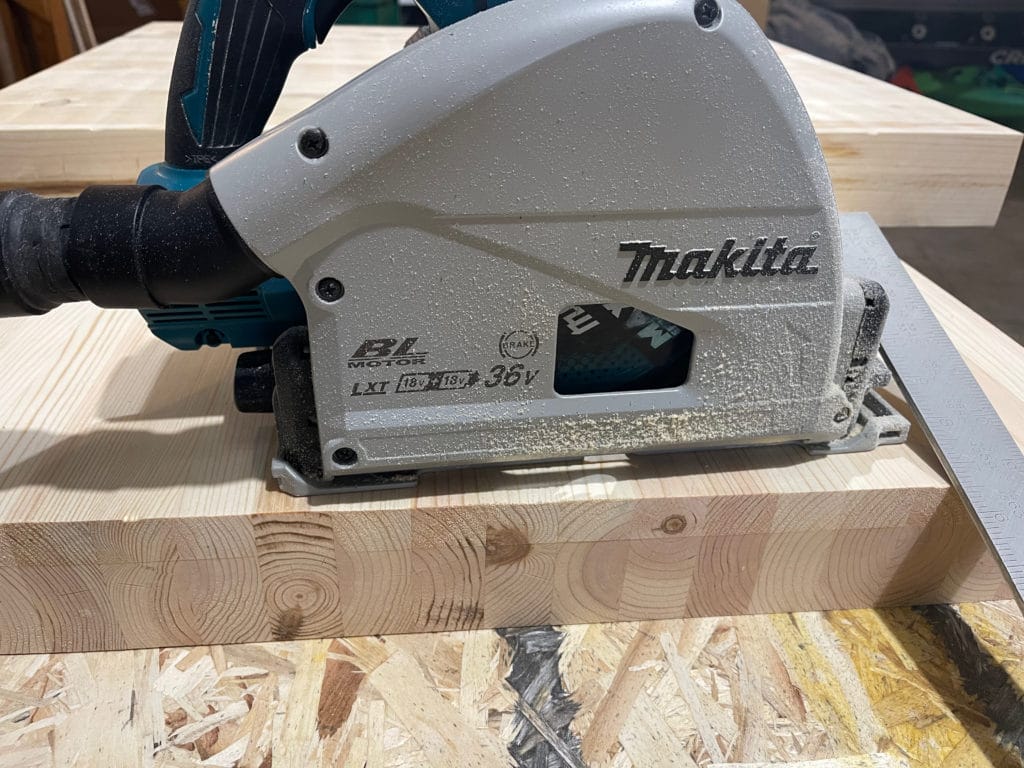
If there were one woodworking tool I wish I had thirty years ago, it would be the track saw.
While similar in appearance to a circular saw, a track saw (by name) uses a track that guides it with laser precision for rips and crosscuts.
The benefits? Well, there are many:
- Using connecting tracks, you can rip table tops, plywood sheets, and even hardwood boards of any length
- Rather than lift a 75-pound 3/4 sheet of plywood through a table saw, a track saw lets you accurately cut the sheet in place (I use a sheet of 2″ foam and a Bora centipede table).
- Track saws are now cordless – allowing you to tether to just your dust extractor
- Track saws have an un-paralleled system for producing chip-free cuts
With a high-quality professional woodworking brand like Makita offering up a saw under $500, these saws are affordable for many.
Read more: Best Track Saws and Accessories for Woodworking.
#8 - Professional Woodworking Jigs
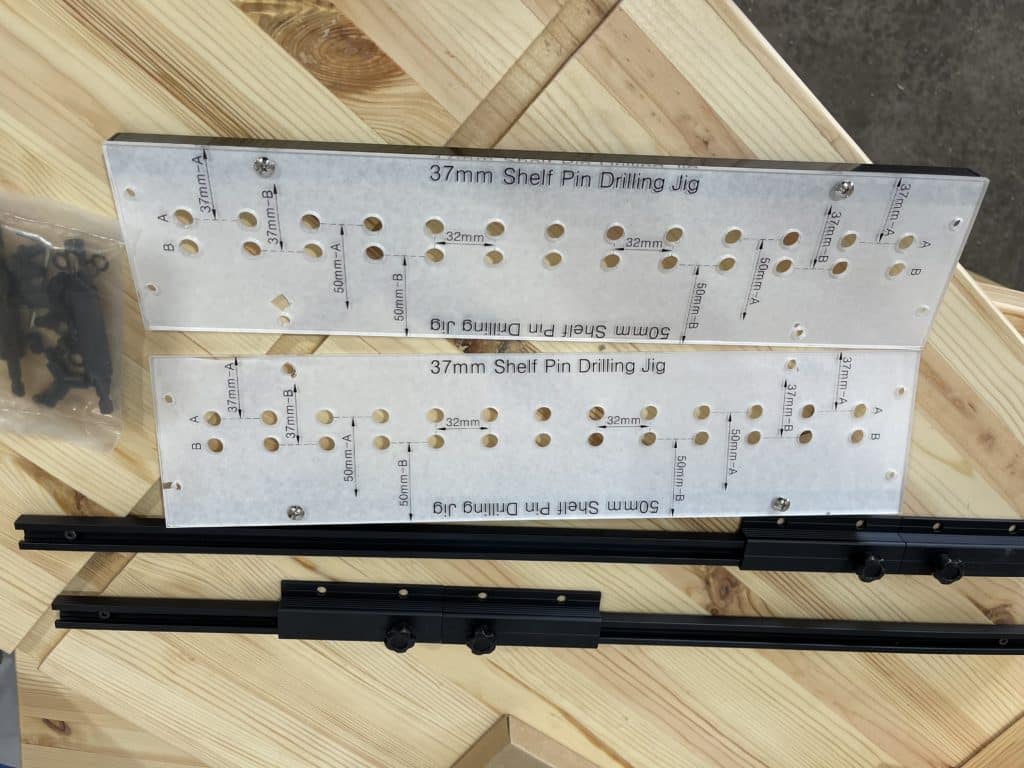
The best way to spot a professional woodworker is to look at the jigs they use to do their jobs. In woodworking, many steps require repeated, high-accuracy cutting, drilling, or placement.
And woodworking jigs are a must to perform tasks like:
- Drill shelf pin holes
- Install drawer slides
- Drill concealed hinge cup holes
- Create pocket holes
- And many more
There are over a dozen types of woodworking jigs (learn more here).
#9 - High Quality Woodworking Vises
Often overlooked, woodworking vise is a simple tool that dates back thousands of years.
Why does it belong on a professional woodworking tool list? Because many amateurs and serious hobbyists need one. Or, the right one, at least.
While a standard metal vise sits on top of a workbench, a woodworker vise is built into the side of the bench. This offers:
- Large clamping surface
- Wood jaws that won’t mar your workpiece
- Holes in the top of the jaw for horizontal clamping with bench dogs
- Frees up the bench top for workpieces.
Read more: Guide to the Best Woodworking Vises.
#10 - Professional Grade Woodworking Clamps
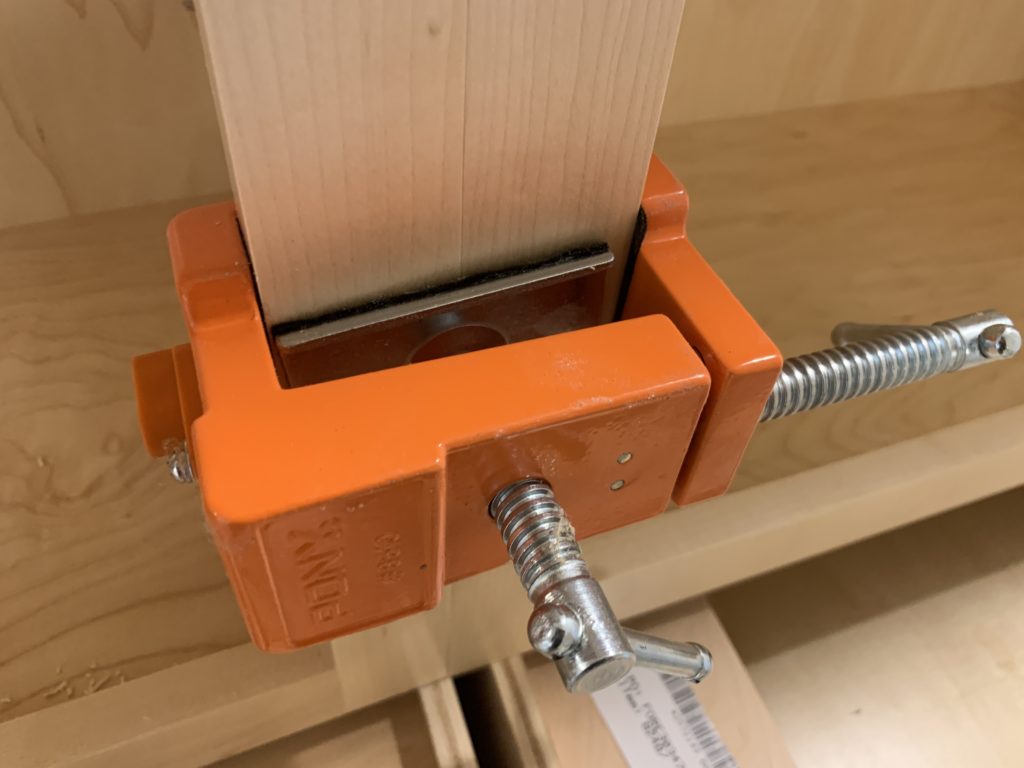
If there is one tool an amateur can buy and have for life, it’s a woodworking clamp. And while professionals use a variety of clamps that will make your head spin, there are a few basics to start with:
- Owning dozens of bar clamps is necessary for bulk-gluing wood panels
- High-quality trigger clamps (Bessey, Pony) allow for fast clamping
But for professionals, you’ll find they use tools like:
- Cabinet claws for installing cabinets
- High-grade parallel clamps for precision glue-ups
- Custom clamps for track systems
Read more: Guide to Woodworking Clamps.
- About the Author
- Latest Posts
Eric has been a professional woodworker for over thirty years and has worked in small cabinet shops making everything from kitchen cabinets to hand-made furniture. Now working from a home woodworking shop Eric is sharing his passion for woodworking, tool advice and how-to knowledge from his Minnesota-based woodshop.
